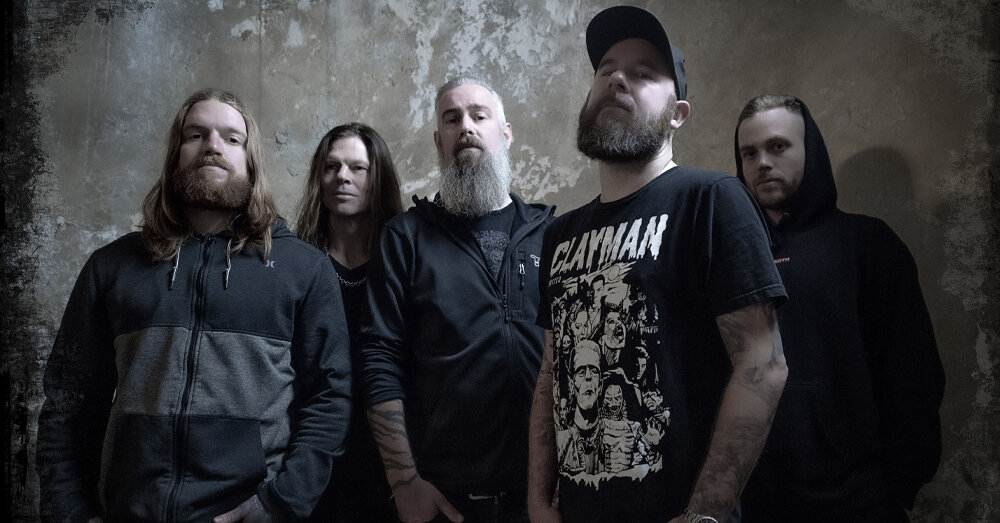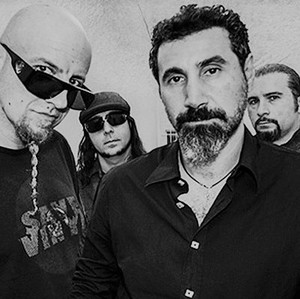
Formed in Leyton, East London, Iron Maiden quickly rose to fame with their self-titled debut album in 1980, featuring hits like “Phantom of the Opera” and “Running Free.” The band’s lineup has seen changes over the years, but its core remains steadfast with founder and bassist Steve Harris leading the charge.
One of the defining features of Iron Maiden’s music is its blend of melodic harmonies and intense guitar riffs, courtesy of guitarists like Dave Murray, Adrian Smith, and Janick Gers, each contributing their unique style to the band’s sound. Bruce Dickinson’s soaring vocals add depth and emotion to their songs, creating an immersive experience for listeners.
Beyond their musical prowess, Iron Maiden is renowned for their elaborate stage shows, complete with intricate set designs and Eddie, their ever-evolving mascot. Eddie, depicted in various forms from a menacing cyborg to a mystical being, has become synonymous with the band’s identity and has adorned album covers and merchandise for decades.
With a discography spanning over four decades, Iron Maiden continues to influence generations of musicians and fans alike. From classics like “The Number of the Beast” and “Fear of the Dark” to more recent albums such as “The Book of Souls,” their music remains a testament to their enduring legacy in heavy metal.
As pioneers of the genre, Iron Maiden’s impact goes beyond music; they have created a community of devoted fans who celebrate their music and ethos. Whether performing in sold-out arenas or headlining major festivals, Iron Maiden’s energy and passion for their craft are palpable, ensuring their place in rock history is etched in stone.
Iron Maiden: A Journey Through Heavy Metal’s Iconic Legacy
Led by the iconic bassist and primary songwriter Steve Harris, Iron Maiden’s journey is a saga of resilience and musical innovation. Their self-titled debut album, released in 1980, introduced the world to their trademark style marked by Bruce Dickinson’s operatic vocals and the dual guitar harmonies of Dave Murray and Adrian Smith. Tracks like “Phantom of the Opera” and “Iron Maiden” immediately showcased their prowess, setting a new standard for metal bands worldwide.
Throughout the 1980s, Iron Maiden continued to ascend, releasing a string of critically acclaimed albums including “Killers,” “The Number of the Beast,” and “Powerslave.” Each album not only expanded their fan base but also solidified their reputation as one of metal’s most influential acts. Their mascot, Eddie, became an iconic symbol of their brand, adorning album covers and mesmerizing audiences during live performances.
As pioneers of the New Wave of British Heavy Metal (NWOBHM), Iron Maiden’s influence extends far beyond music, shaping the cultural landscape of heavy metal. Their unwavering dedication to their craft and their fans continues to resonate, making Iron Maiden a timeless institution in the realm of rock and metal music.
The Evolution of Iron Maiden: From Pioneers to Metal Legends
As pioneers of the New Wave of British Heavy Metal (NWOBHM), Iron Maiden’s early albums like “The Number of the Beast” and “Powerslave” not only defined their sound but also influenced an entire generation of metal bands. Their theatrical live performances, complete with elaborate stage sets and Bruce Dickinson’s dynamic presence, set a new standard for live shows in the genre.
Throughout the decades, Iron Maiden’s evolution has been marked by resilience and creativity. They adapted to changing musical landscapes while staying true to their roots, releasing albums that pushed boundaries and explored new themes. Songs like “Fear of the Dark” and “The Trooper” continue to resonate with audiences, showcasing their ability to blend melody with the intensity that defines their music.
Beyond their musical prowess, Iron Maiden’s impact extends to cultural phenomena, from inspiring countless bands to influencing fashion and art. Their journey from small clubs to headlining major festivals is a testament to their enduring appeal and the loyalty of their fanbase worldwide.
Iron Maiden’s evolution from pioneers of the NWOBHM movement to enduring metal legends is a testament to their musical innovation and cultural impact. Their journey continues to inspire generations of fans and musicians alike, solidifying their place in the pantheon of rock and roll history.
Exploring Iron Maiden’s Most Epic Live Performances
One of the standout performances in Iron Maiden’s storied career took place during their “World Slavery Tour” in 1984-1985. This tour was a monumental undertaking, spanning over 300 shows across the globe. The band’s energy was palpable, and they delivered their music with a ferocity that captivated audiences everywhere. Tracks like “Aces High” and “Rime of the Ancient Mariner” were performed with such intensity that fans left venues exhilarated and craving more.
Fast forward to 2008, Iron Maiden embarked on the “Somewhere Back in Time World Tour,” which was a nostalgic journey through their most iconic albums of the 1980s. The centerpiece of this tour was the stage setup featuring a colossal replica of their infamous mascot, Eddie the Head. This tour not only delighted longtime fans but also introduced a new generation to the band’s unparalleled stage presence and musicianship.
In recent years, Iron Maiden’s “Legacy of the Beast Tour” has been setting new benchmarks for live performances. Inspired by their mobile game of the same name, the tour has seen the band incorporate stunning visual effects and elaborate stage designs that transport fans into the realms of their album covers. Songs from across their discography are performed with a vigor that proves Iron Maiden’s enduring appeal and mastery of their craft.
Behind the Mascot: Eddie’s Impact on Iron Maiden’s Visual Identity
Eddie isn’t just a mascot; he’s a symbol of Iron Maiden’s relentless spirit and creative prowess. From their debut album cover to present-day merchandise, Eddie’s evolution mirrors the band’s musical journey. Imagine a larger-than-life figure, morphing from a gritty zombie to a futuristic cyborg or even an ancient mythological creature. Each transformation tells a story, evoking curiosity and leaving a lasting impression on fans worldwide.
What makes Eddie so intriguing? It’s his ability to embody the essence of Iron Maiden’s music. As the band explores new themes and musical landscapes, Eddie adapts, becoming a visual representation of their sonic evolution. He’s not merely a static image but a dynamic entity that grows and changes alongside the band.
Think of Eddie as Iron Maiden’s silent storyteller, conveying narratives of darkness, rebellion, and fantasy. Whether he’s wielding a chainsaw on stage or adorning a tour poster, Eddie commands attention, sparking conversations among fans and critics alike.
Moreover, Eddie isn’t confined to album covers and posters; he’s a cultural icon. His image graces everything from t-shirts to tattoos, cementing Iron Maiden’s place in pop culture history. You can spot Eddie’s influence in fashion trends, artwork, and even other bands’ stage designs. He’s more than a mascot; he’s a phenomenon.
So, the next time you see Eddie’s menacing grin or glowing eyes, remember that he’s more than just a character – he’s a vital part of Iron Maiden’s legacy. His impact transcends music, resonating with generations of fans who find solace and excitement in his ever-changing presence. Eddie isn’t just a mascot; he’s the heartbeat of Iron Maiden’s visual identity, forever etched into the annals of rock ‘n’ roll history.
Bruce Dickinson: The Voice That Defined Iron Maiden
If you’ve ever felt the electric charge of heavy metal music pulsating through your veins, chances are you’ve heard of Bruce Dickinson. He’s not just a vocalist; he’s the soul-stirring force behind Iron Maiden, a band that has carved its name into the annals of rock history. But what makes Bruce Dickinson stand out from the countless other rock legends?
Imagine a voice that slices through the air like a samurai sword—sharp, powerful, and relentless. That’s Bruce Dickinson for you. His vocal prowess isn’t just about hitting high notes (although he does that with aplomb); it’s about the raw energy he brings to every lyric, every song. From the haunting ballads to the thunderous anthems, Dickinson’s voice is the sonic embodiment of Iron Maiden’s spirit.
But it’s not just about the vocals. Dickinson is a true storyteller, weaving intricate tales of history, mythology, and the human condition into the fabric of Iron Maiden’s music. When he belts out “The Trooper” or “Run to the Hills,” you’re not just listening to a song—you’re marching into battle, riding alongside legends, feeling the heat of adrenaline-fueled conflicts.
And let’s not forget his stage presence. Dickinson is a performer in every sense of the word. With his trademark energy and charisma, he commands the stage like a modern-day minstrel, leading his audience on a musical journey they won’t soon forget. His presence elevates Iron Maiden’s concerts from mere shows to epic experiences, where fans lose themselves in the music and the magic.
Frequently Asked Questions
Where can I find Iron Maiden’s upcoming tour dates?
Find Iron Maiden’s upcoming tour dates on their official website or on reputable ticketing platforms. These sources provide accurate and up-to-date information about their tour schedule.
What are some of Iron Maiden’s biggest hit songs?
Explore Iron Maiden’s biggest hit songs, spanning decades of iconic metal anthems. Discover classics like ‘The Number of the Beast,’ ‘Run to the Hills,’ ‘Fear of the Dark,’ and more that have defined their legendary career.
How did Iron Maiden get their name?
Iron Maiden got their name from a medieval torture device known for its brutal and iconic association with suffering. The band members found the name fitting for their heavy metal image and the themes often explored in their music.
Who are the current members of Iron Maiden?
Discover the current members of Iron Maiden with our concise FAQ. Get updated information on the band’s lineup right now.
What is Iron Maiden’s most iconic album?
Discover Iron Maiden’s most iconic album with our FAQ. Find out which album stands out as their most celebrated work, embodying their signature sound and enduring legacy.









One thought on “Iron Maiden”